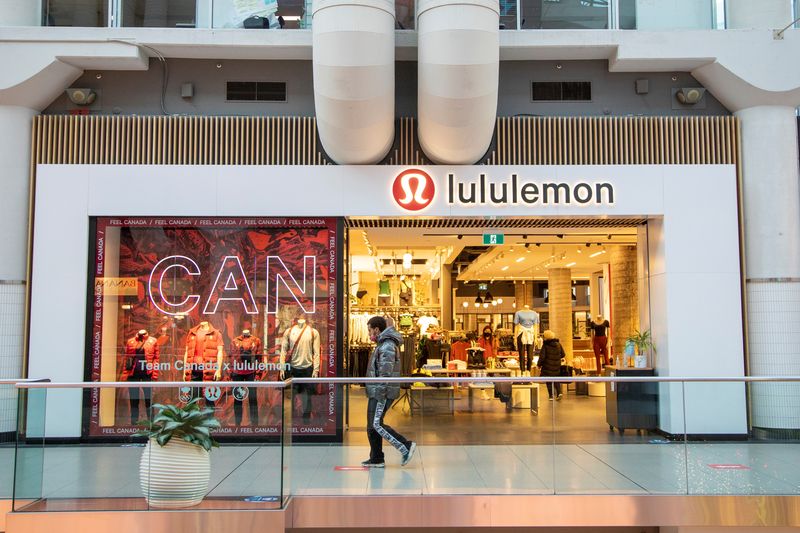By Savyata Mishra
(Reuters) - Lululemon (NASDAQ:LULU), facing its slowest quarterly growth in more than four years, will have to deal with Wall Street questions on whether it has made significant strides toward fast-tracking trendier styles to its stores to better compete with athleisure upstarts.
Lululemon is likely to see revenue rise nearly 7% to $2.36 billion in the third quarter ended October, according to estimates compiled by LSEG, compared with a nearly 19% jump in the same period a year ago.
Shares of the company, which is set to report its results after the bell on Thursday, have slumped 33% so far this year.
The Canada-based maker of high-end yoga pants, joggers and sweatshirts, has been losing ground to brands such as Alo Yoga and Vuori, which refresh their shelves with fresh styles more frequently, a practice that appeals to younger shoppers.
Celebrities including Kendall Jenner, Taylor Swift and Kaia Gerber who have previously worn Lululemon activewear have recently been spotted in gear from these two California-based brands.
"In established and strong athleisure markets, like California, so far in 2024 our data has signaled that newer brands like Alo Yoga and Vuori are outpacing Lululemon in visitation growth year-over-year," said Elizabeth Lafontaine, director of research at Placer.ai.
Moreover, Gap-owned Athleta, which sells $109 leggings on its website, returned to growth in its most recent quarter, helped by a trendier collection of joggers and tees, and social media buzz.
In contrast, Lululemon's North America business has shown signs of fatigue with product missteps in its women's business prompting it to slash its 2024 sales and profit forecasts in August.
Lululemon has blamed its choppy sales on lower availability of smaller sizes and colors in its key women's apparel business as well as less newness across core and seasonal styles.
In July, the company had to pull newly launched $98 "Breezethrough" leggings off shelves as shoppers criticized the V-shaped back seam of the tights as "unflattering".
"Lululemon is ubiquitous and more mainstream ... it's challenging to keep up that pace (of growth) once a brand gets that large," said Ward Kampf, president of Northwood Retail, a commercial real estate firm that owns and operates open-air mixed-use properties across the country.
Kampf, who has helped lease stores to Vuori, Alo and Lululemon in Texas and California, said Vuori and Alo are aggressively growing their store count, strategically targeting openings around existing Lululemon locations.
Roughly 90% of Vuori stores and 84% of Alo stores now operate within 0.5 miles of a Lululemon location across the United States, he said, citing industry data.
Lululemon had about 370 stores in the U.S., as of Jan. 28, 2024, while the other two brands together have over 100 outlets in the country.
"We suspect the company has maximized its core category total addressable market and is attempting to find growth in other areas, but it isn't working," Jefferies analyst Randal Konik said.
The company has broadened its product category to include flannel shirts, ankle-length skirts and launched a Disney-themed 34-piece limited-edition collection this month, but analysts say it has not translated into a sales boost.

Lululemon's customer base consists typically of middle- to upper-income people who take part in fitness activities such as yoga, running, and gym workouts
"While you're potentially bringing in more revenue opportunity by bringing in more traffic into the store, you could also alienate your core customer who starts going to other stores in the vicinity," Konik said.